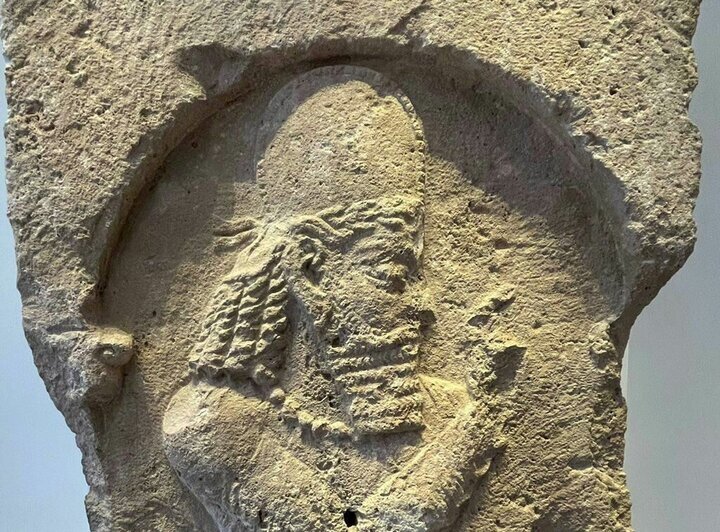Tehran museum to put Sasanian relief recovered from smugglers in UK on display

TEHRAN – A Sassanian relief returned by the UK after being recovered from smugglers in Stansted airport will be on display at the National Museum of Iran in the near future.
The relic is arranged to go on show at the National Museum following a two-day 14-day quarantine to curb possible transmission of viruses to other museum objects, Mehr quoted a cultural heritage official as saying on Thursday.
The smuggled relief of a bearded man was bought home on Wednesday, days after it was delivered to the Iran embassy in London by the UK National Crime Agency
In a message on his Twitter account last week, Seyed Mahdi Hosseini Matin, the chargé d'affaires of Iran to the UK, said the ancient relief had been delivered to the embassy and would be returned to Iran soon.
“The legal ownership of this precious ancient work is now transferred [from the UK National Crime Agency] to the Islamic Republic of Iran,” the envoy said.
This smuggled statue of a Sassanid soldier is handed over to the embassy after proving that it belongs to Iran, and after it was displayed on loan at the British Museum for three months, Hosseini Matin explained.
Experts believe the over-one-meter-tall antique was hacked out of live rock or on-site carved rock. It depicts an imposing male figure carved in the 3rd century CE and is estimated to be worth £30 million.
The delicately carved relic was heading for the black market in Britain when it was seized by security personnel. The haphazard packaging, which may have been meant to imply that it was a useless item, made Border Force officers suspicious. The over-one-meter-tall antique was hacked out of live rock or on-site carved rock.
Dr. St John Simpson, a senior curator and archaeologist in the British Museum’s Department of the Middle East, said: “We almost never come across a case of something being cut out of the “living rock.” That’s a level of brutalism that surpasses anything.
“You’ve even got felt-tip marks on the back before they’ve used an angle grinder to slice diagonally behind it and across the top. It was then packed in an incredibly bad manner, in a small, almost unpadded crate held together with nails.
“It belongs to a period when Iran was the center of a powerful empire stretching from Syria to the Caucasus and Central Asia, and with its capital at Ctesiphon, south of present-day Baghdad,” he said. “The Sasanians were powerful rivals of Rome and famous today for their fine silverware and cut glass.”
“It looks amazing,” Simpson said. “It is stunningly attractive. The valuation could be anything, really. We’re talking from £20m to £30m-plus. There’s never been anything like it on the market.”
He said the artifact would be “incredibly valuable” on the black market.
Iran's history places a great deal of significance on the Sassanid era, which saw a general renaissance in Persian art and architecture. In 2018, a collection of Sassanian historical cities in southern Iran, known as the “Sassanid Archaeological Landscape of Fars Region,” was inscribed on the UNESCO World Heritage list.
AFM
Leave a Comment